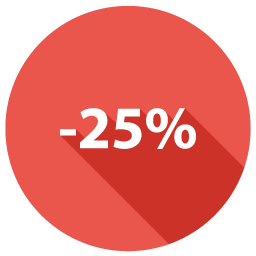,99 or ,00 – when charm pricing backfires
Relevant topics Archive, Strategy
Marketers love to end their prices with the magical numerical combination of 99. This practice, which is also known as charm pricing, psychological pricing or odd pricing, is seen in virtually every country across the globe. There’s no question about it: it works. But new research shows that the pricing trick will backfire under specific circumstances.
Marketers love ,99 pricing with good reason, because ample studies show that it works. The difference between $100,00 and $99,99 is, while economically negligible, but psychologically powerful. Marketers know that charm prices helps them sell more products. Psychologists, have deepened our understanding of why this is the case.
The psychology behind charm pricing
First of all, odd pricing allows marketers to price their products without crossing painful psychological pricing borders. $9,99 somehow feels like a completely different ballpark than the zone of $10,00 and above. This explains why psychological pricing is especially effective for products just below the typical psychological price points where the price receives an extra digit, such as 10,-, 100,-, 1000,- etc.
But that doesn’t explain why 63,99 may be more effective than 64,00, and yet research shows that the psychological pricing effect often arises as well. The reason seems to be experiential in this case: our brains learn to associate ,99 pricing with good deals, after having encountered so many of them over the course of our marketing induced lives.
But as effective as psychological pricing appears to be in increasing our purchase appetite, the practice sometimes backfires. New research by Ortega & Tabares (2023) illuminates exactly when that’s the case.
Not all brands benefit from charm pricing
Did you know that a Samsung phone will sell more units at $999 price level than $1000? No surprise there. Yet for Apple, this effect reverses: an iPhone becomes more attractive if its price does not end in 99.
How come?
Apparantly, some brands and categories do not fit well with the odd pricing tactic. While a ,99 price intuitively makes us feel the product is more affordable, this association comes at the expense with our expectations regarding status and quality. Our brain quite literally regards it as a ‘cheap trick’. This explains why luxury brands and brands that are otherwise associated with high quality do not fare well under psychological pricing. These brands would be wise to refrain from psychological pricing in favor of even prices.
Is there are difference between ,99 and ,95?
A related question in the realm of psychological pricing refers to the difference between prices ending in 95 versus those ending in 99.
Fortunately, the jury’s quite clear on this one: it either doesn’t make a difference, and in the remaining cases ,99 comes out on top. It seems that when marketers embrace psychological pricing, they should do so all the way and go for those double digits.
Take-Home Points:
- Products ending in ,99 make us unconsciously feel it’s more affordable
- Psychologically, affordable and luxury do not go together
- Luxury brands and brands that sell high-quality products should favor ,00 pricing
Further Reading
-
Product or Price first? How Order Increases Sales
Imagine walking into a clothing store and the first thing you see is a rack of jeans clearly labeled “€49.99”. With this price in mind, you start looking at the different jeans. As you scavenge those denims, you might find something you like.
Now let's look at a different scenario: imagine walking past a display where you see a pair of jeans. When you walk over to take a closer look, you see that it says “€49.99” on the tag. Will you go in and look for the pair of jeans?
In both cases, the denims and importantly, the price are the same (e.g., you have the same kind of information). However, depending on which one you see first, will you make the same kind of decision?
-
The Boomerang Effect of Discounts - Why Lower Prices Can Backfire and How to Avoid a Decrease in Sales
Discover how to improve sales by applying the right discounts for the right products.



